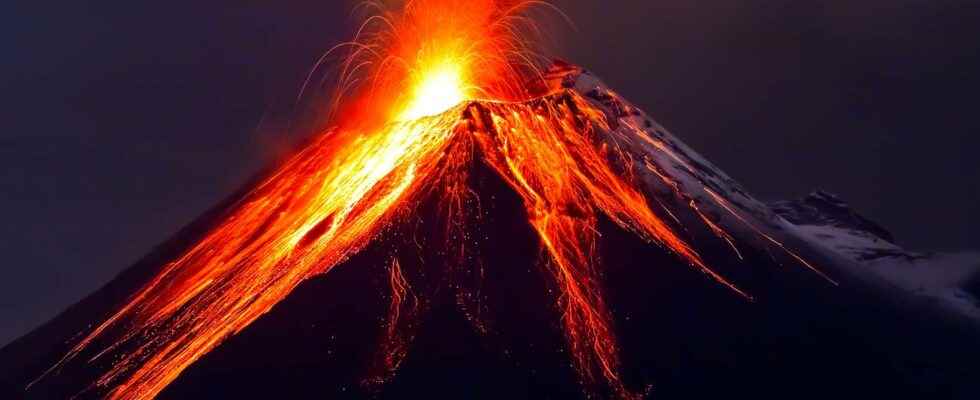Lava and magma are two terms relating to volcanism that we sometimes tend to use interchangeably. However, both refer to different materials.
You will also be interested
[EN VIDÉO] How does magma form before a volcanic eruption? Magma is the origin of the formation of volcanoes. This molten rock, which bubbles up in the crater, comes from a partial melting of the Earth’s mantle. Futura met Jacques-Marie Bardintzeff, doctor in volcanology, who tells the origin of magma.
Lava and magma, terms used in the middle of the volcanism, are both derived from rocks in merger.
The magma at the origin of the lava
The term “magma” refers to the molten rock located in the Earth. Magma is subject to temperatures and pressures high. It’s made of gas dissolved, of liquids, volatile particles and elements solid. When it cools, it turns into igneous rock of two types:
- when magma remains confined underground, its igneous rock is called ” plutonic rock » ;
- when magma rises to the surface, its igneous rock is referred to as “lava”.
Lava pours out of the volcano
Thus, the lava corresponds to a magma pushed out of the ground duringvolcanic eruptions. On leaving the crater, the temperature of the lava is between 700°C and 1,200°C. It cools rapidly – on the surface at least – in contact withair free.
The chemical composition lava is different from that of magma. It usually contains less iron and of magnesium and more of calcium, of sodium or of potassium. Upon reaching the surface, the lava experiences a drop in pressure causing a degassing (carbon dioxide, water vapour, etc.). Certain elements contained in lava also tend to oxidize, such as sulfur, for example.
Interested in what you just read?
